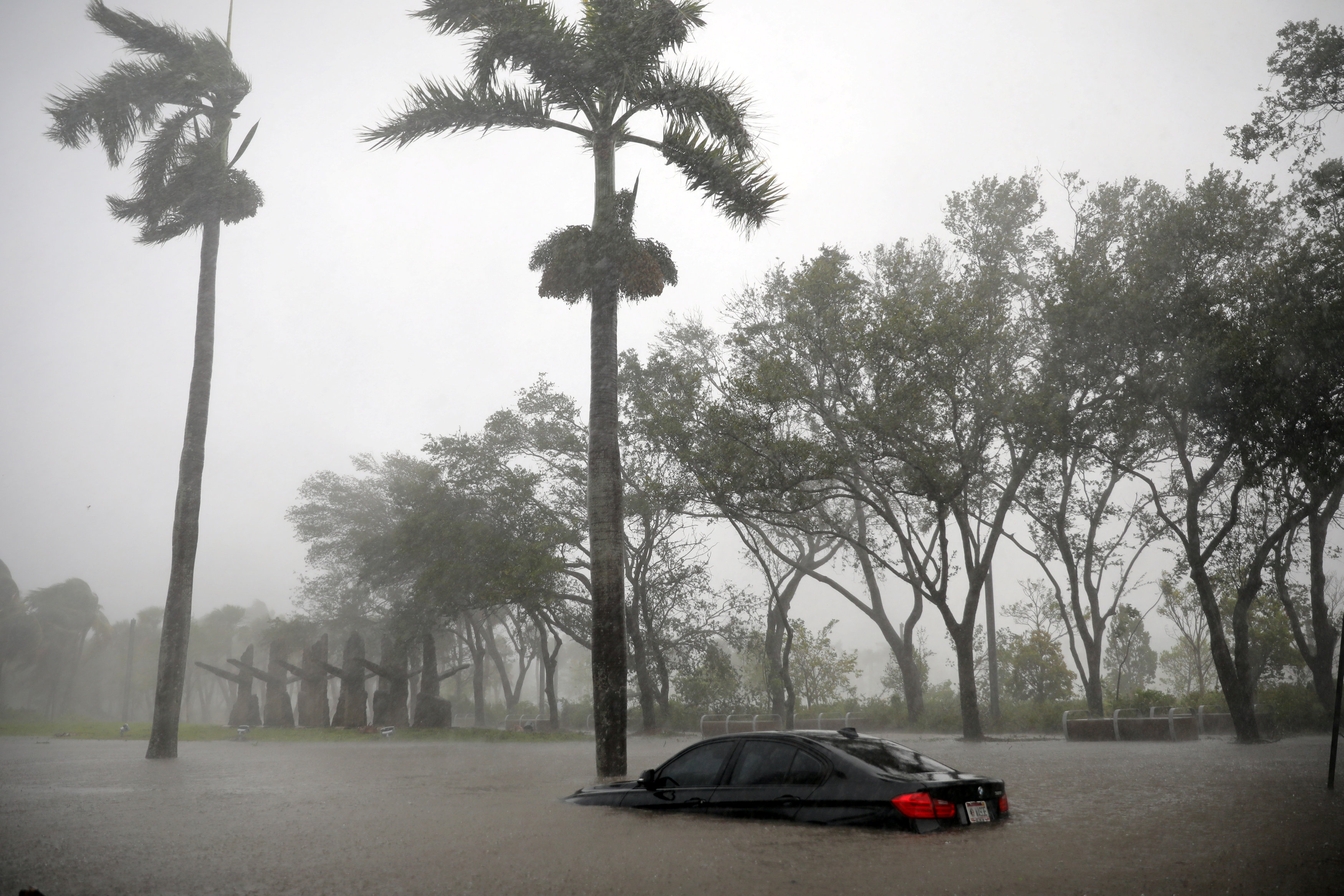
By Andy Sullivan and Robin Respaut
FLORIDA CITY/MARCO ISLAND, Fla. (Reuters) – Florida began allowing some residents to return to their homes hammered by Hurricane Irma on Tuesday, but officials warned that it would take a long time to repair the damage wrought by high winds and pounding surf, particularly in the Keys archipelago.
Irma, which had rampaged through the Caribbean as one of the most powerful Atlantic hurricanes on record, was downgraded to a tropical depression on Monday. It will likely dissipate from Tuesday evening, the National Hurricane Center said.
At its peak it prompted the evacuation of 6.5 million people, the largest evacuation in modern U.S. history.
Local authorities told around 90,000 residents of Miami Beach and from some parts of the Florida Keys they could go home but warned it may be prudent not to remain there.
“This is going to be a frustrating event. It’s going to take some time to let people back into their homes particularly in the Florida Keys,” Brock Long, administrator of the Federal Emergency Management Agency, told a morning press conference.
He noted that FEMA was continuing to rescue people stranded by flooding around Jacksonville, in the state’s northeast.
After leaving a trail of destruction on several Caribbean islands, killing nearly 40 people, Irma caused record flooding in parts of Florida. Only one Florida fatality has been confirmed so far, but a local official said there had been more deaths.
Irma became the second major hurricane to make landfall in the United States in a little more than two weeks when it roared ashore on Key Cudjoe as a powerful Category 4 storm on Sunday. It followed Hurricane Harvey, which plowed into Houston late last month, killing about 60 and wreaking some $180 billion in damage, largely through flooding.
About 2-1/2 months remain in the official Atlantic hurricane season. The National Hurricane Center is monitoring another hurricane, Jose, which is spinning in the Caribbean, currently about 700 miles (1,130 km) from the mainland.
MILITARY AID
The U.S. aircraft carrier Abraham Lincoln has arrived off Florida’s east coast and two amphibious assault ships will arrive on Tuesday to help in the Keys. The military will distribute food and help evacuate 10,000 residents who did not leave before the storm.
Monroe County Commissioner Heather Carruthers said Monday that people had been killed in the Keys, where nearly 80,000 permanent residents live, apart from one already known fatality. She did not have a count on how many.
“We are finding some remains,” she said in an interview with CNN. Video footage of the islands showed homes torn apart by sustained winds of up to 130 mph (210 kph).
Several major airports in Florida that halted passenger operations due to Irma began limited service on Tuesday, including Miami International, one of the busiest U.S. airports.
The scope of damage in Florida and neighboring states paled in comparison with the devastation left by Irma in parts of the Caribbean, where it razed islands and killed nearly 40.
RECORD FLOODS
The center of Irma moved into Alabama on Tuesday and will head into western Tennessee by Tuesday evening with maximum sustained winds of 25 mph.
In South Carolina, the Charleston Harbor area saw major flooding on Monday with water about 3 feet (1 meter) above flood stage and minor flooding is forecast for Tuesday, the National Weather Service said.
Miami Beach will allow residents to return home from 8 a.m. (1200 GMT), its mayor said. More evacuation orders are likely to be lifted on Tuesday.
Monroe County opened road access on Tuesday morning for residents and business owners from Key Largo, the main island at the upper end of the chain, as well as the towns of Tavernier and Islamorada farther to the south, fire officials said.
No timetable was given for reopening the remainder of the Keys.
MOST OF FLORIDA WITHOUT ELECTRICITY
Insured property losses in Florida from Irma are expected to run from $20 billion to $40 billion, catastrophe modeling firm AIR Worldwide estimated.
Utilities reported some 7.4 million homes and businesses were without electricity in Florida and neighboring states and said it could take weeks to fully restore service.
Between 2,000 and 3,000 utility workers from out of state, sent to inspect and repair power lines, were staying in Broward County in cramped conditions at BB&T Center, home to the National Hockey League’s Florida Panthers, said Gus Beyersdorf, 40, of De Pere, Wisconsin.
“Each one of us has a cot, a single foot apart,” Beyersdorf said on Monday afternoon. “I slept in the truck last night just to get a break from it.”
At least one other possibly storm-related fatal car crash was reported on Sunday in Orange County, Florida. On Monday, two people were killed by falling trees in two Atlanta suburbs, according to local authorities.
(Additional reporting by Daniel Trotta in Orlando, Fla., Bernie Woodall, Ben Gruber and Zachary Fagenson in Miami, Dan Whitcomb in Los Angeles, Letitia Stein in Detroit, Jon Herskovitz in Austin, Texas, Colleen Jenkins in Winston-Salem, N.C., Harriet McLeod in Mt. Pleasant, S.C., Scott DiSavino in New York and Marc Frank in Havana; Writing by Scott Malone and Jon Herskovitz; Editing by Raissa Kasolowsky and Chizu Nomiyama)





























